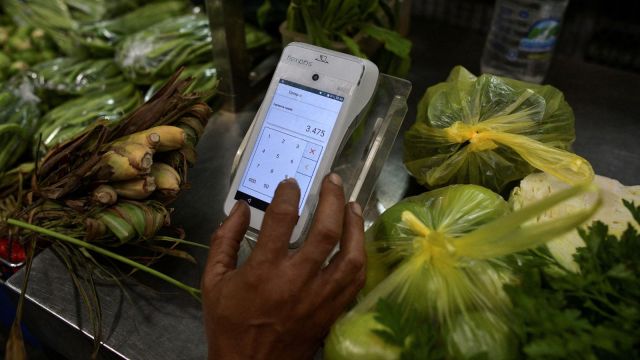Wholesale inflation at -0.52% in October; in negative zone for seventh straight month
Wholesale inflation, which reflects prices at producers’ end, remains below retail inflation. The latest retail inflation data for October showed Consumer Price Index-based inflation eased to a four-month low of 4.87 per cent in October.
 Inflation in food articles eased to 2.53 per cent in October. It was 3.35 per cent in the previous month. (Reuters)
Inflation in food articles eased to 2.53 per cent in October. It was 3.35 per cent in the previous month. (Reuters) Wholesale price Index- based inflation rate fell more than expected to (-) 0.52 per cent in October, marking the seventh consecutive month in the negative territory, data released by the Ministry of Commerce and Industry on Tuesday showed. Continued deflation in manufactured products, and fuel and power categories kept the WPI inflation lower even though sequentially there was some uptick in food prices led by cereals, vegetables and protein items. The inflation rate has been in the negative zone since April and was at (-) 0.26 per cent in September 2023 and at 8.67 per cent in October last year.
Wholesale inflation, which reflects prices at producers’ end, remains below retail inflation. The latest retail inflation data for October showed Consumer Price Index-based inflation eased to a four-month low of 4.87 per cent in October. A negative wholesale inflation though could result in a lower nominal Gross Domestic Product (GDP), with some estimates pegging it to not be over 9 per cent due to slower GDP deflator that has a significant weight of WPI. The lower nominal GDP growth could result in fiscal slippage risk, with the government’s fiscal deficit estimates calculated as a percentage of the GDP.
In October, wholesale inflation in food articles eased to 2.53 per cent from 3.35 per cent in September. On a month-on-month basis, however, the food articles inflation increased by 1.33 per cent. Inflation rate for vegetables declined to (-) 21.04 per cent, while for potato was (-) 29.27 per cent. However, the inflation rate for onion increased to 62.60 per cent, for pulses increased to 19.43 per cent, while for paddy and wheat increased to 9.39 per cent and 4.75 per cent, respectively. The fuel and power basket inflation was at (-) 2.47 per cent in October as against (-) 3.35 per cent in September. In manufactured products, the inflation rate was at (-) 1.13 per cent as against (-) 1.34 per cent in September.
Experts said though prices have eased, there could be some risks from volatile vegetable prices and the deflationary trend may not continue in coming months. “The deflationary trend in WPI could end in the coming months with the support of favourable base fading away gradually and expectation of subdued commodity prices amid global demand weakness. However, for the full year, we expect WPI inflation to average below 1 per cent,” Rajani Sinha, Chief Economist, CareEdge Ratings said.
Rahul Bajoria, MD & Head of EM Asia (ex-China) Economics, Barclays, said, “Within manufactured products, food, clothing and furniture prices went up, while there was a general decline in leather, rubber and metal related products. This perhaps reflects some moderation in global commodity prices, as we have seen visible declines in prices of industrial raw materials recently. Core WPI (non-food manufacturing) fell 0.1 per cent month-on-month and stayed negative on a year-on-year basis, at -1 per cent for the eighth consecutive month.”
“Overall, inflation continues to stay broadly in check, with a stable INR, manageable energy costs, and a countercyclical tax policy on fuel prices helping keep inflation stable. Strong economic growth, coupled with demand, should keep some pressure on inflation, but we see scope for headline inflation to remain manageable, with some near-term upside risks emanating from volatile vegetable prices,” he added.
- 01
- 02
- 03
- 04
- 05































